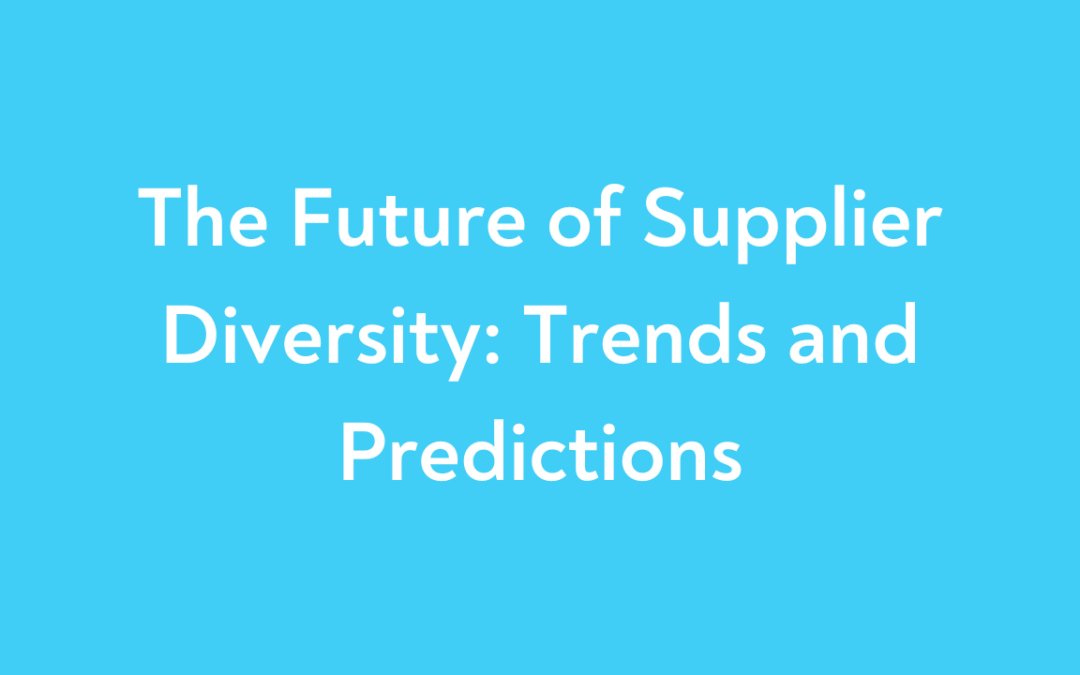Supplier diversity has quickly become an integral part of business strategies. As more new supply chains are being formed, a more inclusive and equitable business landscape is being created. As we look towards the future, it’s important to explore ways that supplier diversity will continue to evolve and work to stay on the cutting edge of new innovations in supplier diversity. This article will identify the trends shaping the future of supplier diversity and provide insights into how businesses can prepare for what’s coming.
Digital Transformation of Supplier Diversity
One trend that’s defining the future of supplier diversity is the new digital transformation. Emerging technologies such as artificial intelligence (AI), big data, and blockchain are revolutionizing supplier diversity, offering more efficient, transparent, and insightful ways to manage diverse supply chains.
AI can streamline the process of discovering and vetting diverse suppliers. Big data analytics can provide insights into supplier performance and the impact of diversity initiatives. Blockchain technology can enhance transparency and traceability, fostering trust between businesses and diverse suppliers.
At Hire Ground, we are at the forefront of this digital transformation. Our platform harnesses many of these technologies to simplify and optimize supplier diversity management, empowering businesses to build an inclusive and competitive supply base.
Globalization of Supplier Diversity
The globalization of supplier diversity is another trend to watch. With companies operating in an increasingly interconnected world, supplier diversity is expanding beyond local and national boundaries. Businesses are now seeking diverse suppliers globally, promoting inclusivity and equality on a global scale.
This globalization trend also means diverse suppliers have more opportunities than ever before. They can now reach out to businesses worldwide and rapidly expand their market presence.
Greater Accountability and Transparency
There’s a growing demand for more accountability and transparency in supplier diversity. Stakeholders, customers, employees, and investors, want to see how businesses are actually implementing their diversity commitments. This trend is driving businesses to be more transparent about their diversity metrics and initiatives, leading to more robust and intentional supplier diversity programs.
Increased Focus on Tier 2 Suppliers
The future of supplier diversity also lies in the focus on Tier 2 suppliers. Tier 2 suppliers are those companies that provide goods to the Tier 1 (direct) suppliers, who in turn provide services to larger corporations. While businesses have been concentrating on diversifying their direct suppliers, there’s a growing realization that diversity should extend to indirect suppliers or Tier 2 suppliers as well. This approach will not only broaden the scope of supplier diversity but also foster a more inclusive and diverse supply chain ecosystem.
Intersectionality in Supplier Diversity
Intersectionality is also becoming an important aspect of supplier diversity. Businesses are recognizing that individuals often belong to multiple diverse groups and that these identities intersect and interact in complex ways. This recognition is leading to more nuanced and comprehensive supplier diversity strategies that address multiple dimensions of diversity.
As we look towards the future, it’s clear that supplier diversity will continue to evolve and redefine business practices. Here at Hire Ground, we’re excited to be part of this journey. We’re committed to leveraging these trends to help businesses and diverse suppliers thrive in this new era of supplier diversity.
Key Takeaways:
- Digital transformation is revolutionizing supplier diversity, making it more efficient, transparent, and insightful.
- Supplier diversity is going global, offering opportunities for diverse suppliers to reach out to businesses worldwide.
- Greater accountability and transparency in supplier diversity are becoming essential.
- There’s an increased focus on Tier 2 suppliers, broadening the scope of supplier diversity.
- Intersectionality is leading to more nuanced and comprehensive supplier diversity strategies.
- By understanding these trends and preparing for them, businesses can seize the opportunities that lie ahead, contributing to a more inclusive and equitable future.


Recent Comments